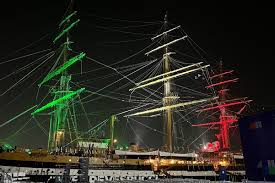 It’s the turn of the India growth story to shine. The International Monetary Fund (IMF) has termed the Indian economy a “Bright Spot” on the global economic landscape and revised the country’s economic growth rate to 7.2 percent by the International Monetary fund.
It’s the turn of the India growth story to shine. The International Monetary Fund (IMF) has termed the Indian economy a “Bright Spot” on the global economic landscape and revised the country’s economic growth rate to 7.2 percent by the International Monetary fund.
The IMF has said in its annual assessment report that India has emerged as one of the fastest-growing big emerging market economies and the growth rate would further accelerate to 7.5 percent in the next fiscal, 2015-16 after the Indian government implements the steps to revitalise the investment cycle and accelerate structural reforms in the country.
“Indian economy is the bright spot in global landscape, becoming one of the fastest-growing big emerging market economies in the world,” the IMF said in a report after its recently concluded annual consultations with India.
“Growth numbers are now much higher and the current account deficit is comfortable, in part due to the fall in gold imports and lower oil price,” IMF Mission Chief for India Paul Cashin said
“New investment project announcements have started to pick up, particularly in the power and transport sectors,” he said.
India has revised the methodology to calculate the GDP figure. The IMF noted this and said that the country has “improved the way it measures economic output”. However, Arvind Subramanian, Chief Economic Advisor, and RBI Governor RaghuramRajan had earlier termed the new methodology as ‘puzzling’. Incidentally, both Subramanian and Rajan had worked with the IMF in the past.
Earlier, the IMF had forecast a growth rate of 5.6 percent for India in the current fiscal, and 6.4 percent for the next. The Indian economy is reviving, helped by positive policy actions that have improved confidence and lower global oil price, the IMF said, while anticipating stronger growth in the next fiscal on the back of stronger investment flows following improvements in the business climate. To continue on this trend India needs to revitalize the investment cycle and maintain the structural reforms mentioned the IMF in its annual reports.
The IMF report also pointed out that the country is well prepared to cope with external shocks although there are possible risks on the horizon, both external and domestic.
The IMF Board said that the main external risk facing India is a surge in global financial market volatility.
If external pressures re-emerge, the rupee flexibility should be an important shock-absorber, along with “judicious foreign exchange intervention, tightening of monetary conditions, and additional fiscal adjustment,” said the IMF.
Author Profile
- India Writes Network (www.indiawrites.org) is an emerging think tank and a media-publishing company focused on international affairs & the India Story. Centre for Global India Insights is the research arm of India Writes Network. To subscribe to India and the World, write to editor@indiawrites.org. A venture of TGII Media Private Limited, a leading media, publishing and consultancy company, IWN has carved a niche for balanced and exhaustive reporting and analysis of international affairs. Eminent personalities, politicians, diplomats, authors, strategy gurus and news-makers have contributed to India Writes Network, as also “India and the World,” a magazine focused on global affairs.
Latest entries
 India and the WorldNovember 26, 2025G20@20: Africa’s Moment – The Once and Future World Order
India and the WorldNovember 26, 2025G20@20: Africa’s Moment – The Once and Future World Order DiplomacyOctober 4, 2025UNGA Resolution 2758 Must Not Be Distorted, One-China Principle Brooks No Challenge
DiplomacyOctober 4, 2025UNGA Resolution 2758 Must Not Be Distorted, One-China Principle Brooks No Challenge India and the WorldJuly 26, 2025MPs, diplomats laud Operation Sindoor, call for national unity to combat Pakistan-sponsored terror
India and the WorldJuly 26, 2025MPs, diplomats laud Operation Sindoor, call for national unity to combat Pakistan-sponsored terror India and the WorldJuly 25, 2025When Fire Ends, Diplomacy Begins
India and the WorldJuly 25, 2025When Fire Ends, Diplomacy Begins







